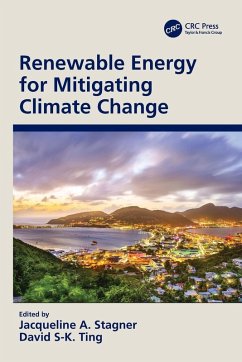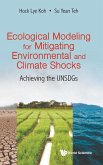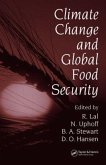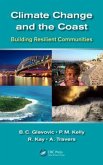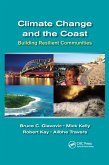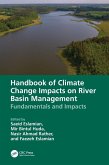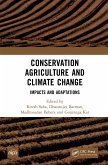Renewable Energy for Mitigating Climate Change
Herausgeber: Stagner, Jacqueline A.; Ting, David S-K.
Renewable Energy for Mitigating Climate Change
Herausgeber: Stagner, Jacqueline A.; Ting, David S-K.
- Broschiertes Buch
- Merkliste
- Auf die Merkliste
- Bewerten Bewerten
- Teilen
- Produkt teilen
- Produkterinnerung
- Produkterinnerung
Based on state-of-the-art science and technologies, this book disseminates the latest advancements concerning the relationship between renewable energy and climate change and presents the best practices to further utilize renewable energy for mitigation.
Andere Kunden interessierten sich auch für
![ECOLOGICAL MODEL MITIGATING ENVIRONMENTAL & CLIMATE SHOCKS ECOLOGICAL MODEL MITIGATING ENVIRONMENTAL & CLIMATE SHOCKS]() Hock Lye Koh & Su Yean TehECOLOGICAL MODEL MITIGATING ENVIRONMENTAL & CLIMATE SHOCKS125,99 €
Hock Lye Koh & Su Yean TehECOLOGICAL MODEL MITIGATING ENVIRONMENTAL & CLIMATE SHOCKS125,99 €![Climate Change and Global Food Security Climate Change and Global Food Security]() Rattan Lal, David O. Hansen, BA. Stewart / N. Uphoff (eds.)Climate Change and Global Food Security305,99 €
Rattan Lal, David O. Hansen, BA. Stewart / N. Uphoff (eds.)Climate Change and Global Food Security305,99 €![Climate Change and the Coast Climate Change and the Coast]() Climate Change and the Coast218,99 €
Climate Change and the Coast218,99 €![Handbook of Climate Change Impacts on River Basin Management Handbook of Climate Change Impacts on River Basin Management]() Handbook of Climate Change Impacts on River Basin Management215,99 €
Handbook of Climate Change Impacts on River Basin Management215,99 €![Climate Change and the Coast Climate Change and the Coast]() Climate Change and the Coast72,99 €
Climate Change and the Coast72,99 €![Handbook of Climate Change Impacts on River Basin Management Handbook of Climate Change Impacts on River Basin Management]() Handbook of Climate Change Impacts on River Basin Management215,99 €
Handbook of Climate Change Impacts on River Basin Management215,99 €![Conservation Agriculture and Climate Change Conservation Agriculture and Climate Change]() Conservation Agriculture and Climate Change196,99 €
Conservation Agriculture and Climate Change196,99 €-
-
-
Based on state-of-the-art science and technologies, this book disseminates the latest advancements concerning the relationship between renewable energy and climate change and presents the best practices to further utilize renewable energy for mitigation.
Hinweis: Dieser Artikel kann nur an eine deutsche Lieferadresse ausgeliefert werden.
Hinweis: Dieser Artikel kann nur an eine deutsche Lieferadresse ausgeliefert werden.
Produktdetails
- Produktdetails
- Verlag: CRC Press
- Seitenzahl: 236
- Erscheinungstermin: 26. August 2024
- Englisch
- Abmessung: 234mm x 156mm x 13mm
- Gewicht: 365g
- ISBN-13: 9781032146072
- ISBN-10: 1032146079
- Artikelnr.: 71237132
- Herstellerkennzeichnung
- Libri GmbH
- Europaallee 1
- 36244 Bad Hersfeld
- gpsr@libri.de
- Verlag: CRC Press
- Seitenzahl: 236
- Erscheinungstermin: 26. August 2024
- Englisch
- Abmessung: 234mm x 156mm x 13mm
- Gewicht: 365g
- ISBN-13: 9781032146072
- ISBN-10: 1032146079
- Artikelnr.: 71237132
- Herstellerkennzeichnung
- Libri GmbH
- Europaallee 1
- 36244 Bad Hersfeld
- gpsr@libri.de
Dr. Jacqueline A. Stagner is the Undergraduate Programs Coordinator of Engineering at the University of Windsor. She has a PhD in Materials Science and Engineering, a Master of Business Administration, and a bachelor's degree in Mechanical Engineering. As an adjunct graduate faculty member in the Department of Mechanical, Automotive and Materials Engineering, she co-advises students in the sustainability and renewable energy areas, in the Turbulence & Energy Laboratory. To date, she has edited four volumes. Dr. David S-K. Ting is the founder of the Turbulence & Energy Laboratory, University of Windsor. As a professor in the Department of Mechanical, Automotive and Materials Engineering, he supervises students on a wide range of research projects in the thermofluids, flow turbulence, energy conversion and conservation, and renewable energy areas. Professor Ting has supervised over eighty-five graduate students and co-authored more than one hundred and fifty journal papers.
Chapter 1. Furthering Renewable Energy for Climate Change Mitigation : Case
Study on the Implementation in Eco-Industrial Estates in Thailand. Chapter
2. Estimation of Global Solar Energy to Mitigate World Energy and
Environmental Vulnerability. Chapter 3. Energy Storage: A Practical
Solution to Increase Wind Energy Integration in the United States
Electricity Sector. Chapter 4. Investigating the Electricity Portfolio
Optimization for Renewable Energy Sources. Chapter 5. The Impact on Energy
Efficiency of Traditional Natural Stones for Sustainable Architecture: The
Case of Authentic Restaurant in Harput Region. Chapter 6. Limits of Waste
Materials on Concrete Mixture Base Using Digital Design and Fabrication
Techniques. Chapter 7. Remote 3D Printing Efficiency in Clay-based
Materials Integration in Sustainable Architectural Design to Production.
Chapter 8. Employing Columba livia Swarmal behavioral patterns in the
design of self-sufficient Photo Bioreactor of Chlorella Spp mass
cultivation in Plaça de Catalunya. Chapter 9. Addressing agricultural
pressures on water resources: A DEA environmental assessment in the case of
European transboundary basins. Chapter 10. The Viability of Nuclear Power
as an Alternative to Renewables for Clean Energy for Climate Change
Mitigation.
Study on the Implementation in Eco-Industrial Estates in Thailand. Chapter
2. Estimation of Global Solar Energy to Mitigate World Energy and
Environmental Vulnerability. Chapter 3. Energy Storage: A Practical
Solution to Increase Wind Energy Integration in the United States
Electricity Sector. Chapter 4. Investigating the Electricity Portfolio
Optimization for Renewable Energy Sources. Chapter 5. The Impact on Energy
Efficiency of Traditional Natural Stones for Sustainable Architecture: The
Case of Authentic Restaurant in Harput Region. Chapter 6. Limits of Waste
Materials on Concrete Mixture Base Using Digital Design and Fabrication
Techniques. Chapter 7. Remote 3D Printing Efficiency in Clay-based
Materials Integration in Sustainable Architectural Design to Production.
Chapter 8. Employing Columba livia Swarmal behavioral patterns in the
design of self-sufficient Photo Bioreactor of Chlorella Spp mass
cultivation in Plaça de Catalunya. Chapter 9. Addressing agricultural
pressures on water resources: A DEA environmental assessment in the case of
European transboundary basins. Chapter 10. The Viability of Nuclear Power
as an Alternative to Renewables for Clean Energy for Climate Change
Mitigation.
Chapter 1. Furthering Renewable Energy for Climate Change Mitigation : Case
Study on the Implementation in Eco-Industrial Estates in Thailand. Chapter
2. Estimation of Global Solar Energy to Mitigate World Energy and
Environmental Vulnerability. Chapter 3. Energy Storage: A Practical
Solution to Increase Wind Energy Integration in the United States
Electricity Sector. Chapter 4. Investigating the Electricity Portfolio
Optimization for Renewable Energy Sources. Chapter 5. The Impact on Energy
Efficiency of Traditional Natural Stones for Sustainable Architecture: The
Case of Authentic Restaurant in Harput Region. Chapter 6. Limits of Waste
Materials on Concrete Mixture Base Using Digital Design and Fabrication
Techniques. Chapter 7. Remote 3D Printing Efficiency in Clay-based
Materials Integration in Sustainable Architectural Design to Production.
Chapter 8. Employing Columba livia Swarmal behavioral patterns in the
design of self-sufficient Photo Bioreactor of Chlorella Spp mass
cultivation in Plaça de Catalunya. Chapter 9. Addressing agricultural
pressures on water resources: A DEA environmental assessment in the case of
European transboundary basins. Chapter 10. The Viability of Nuclear Power
as an Alternative to Renewables for Clean Energy for Climate Change
Mitigation.
Study on the Implementation in Eco-Industrial Estates in Thailand. Chapter
2. Estimation of Global Solar Energy to Mitigate World Energy and
Environmental Vulnerability. Chapter 3. Energy Storage: A Practical
Solution to Increase Wind Energy Integration in the United States
Electricity Sector. Chapter 4. Investigating the Electricity Portfolio
Optimization for Renewable Energy Sources. Chapter 5. The Impact on Energy
Efficiency of Traditional Natural Stones for Sustainable Architecture: The
Case of Authentic Restaurant in Harput Region. Chapter 6. Limits of Waste
Materials on Concrete Mixture Base Using Digital Design and Fabrication
Techniques. Chapter 7. Remote 3D Printing Efficiency in Clay-based
Materials Integration in Sustainable Architectural Design to Production.
Chapter 8. Employing Columba livia Swarmal behavioral patterns in the
design of self-sufficient Photo Bioreactor of Chlorella Spp mass
cultivation in Plaça de Catalunya. Chapter 9. Addressing agricultural
pressures on water resources: A DEA environmental assessment in the case of
European transboundary basins. Chapter 10. The Viability of Nuclear Power
as an Alternative to Renewables for Clean Energy for Climate Change
Mitigation.

